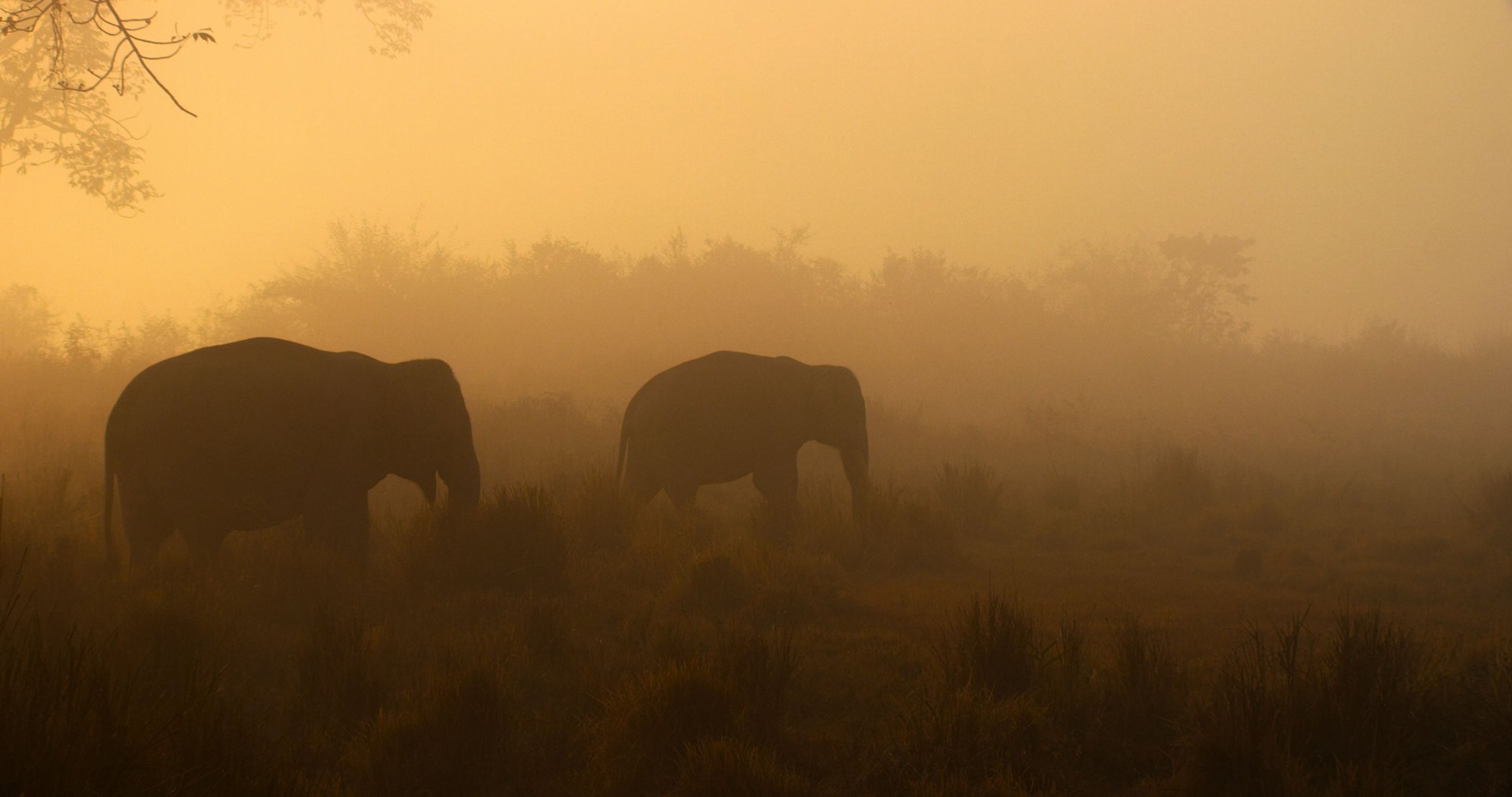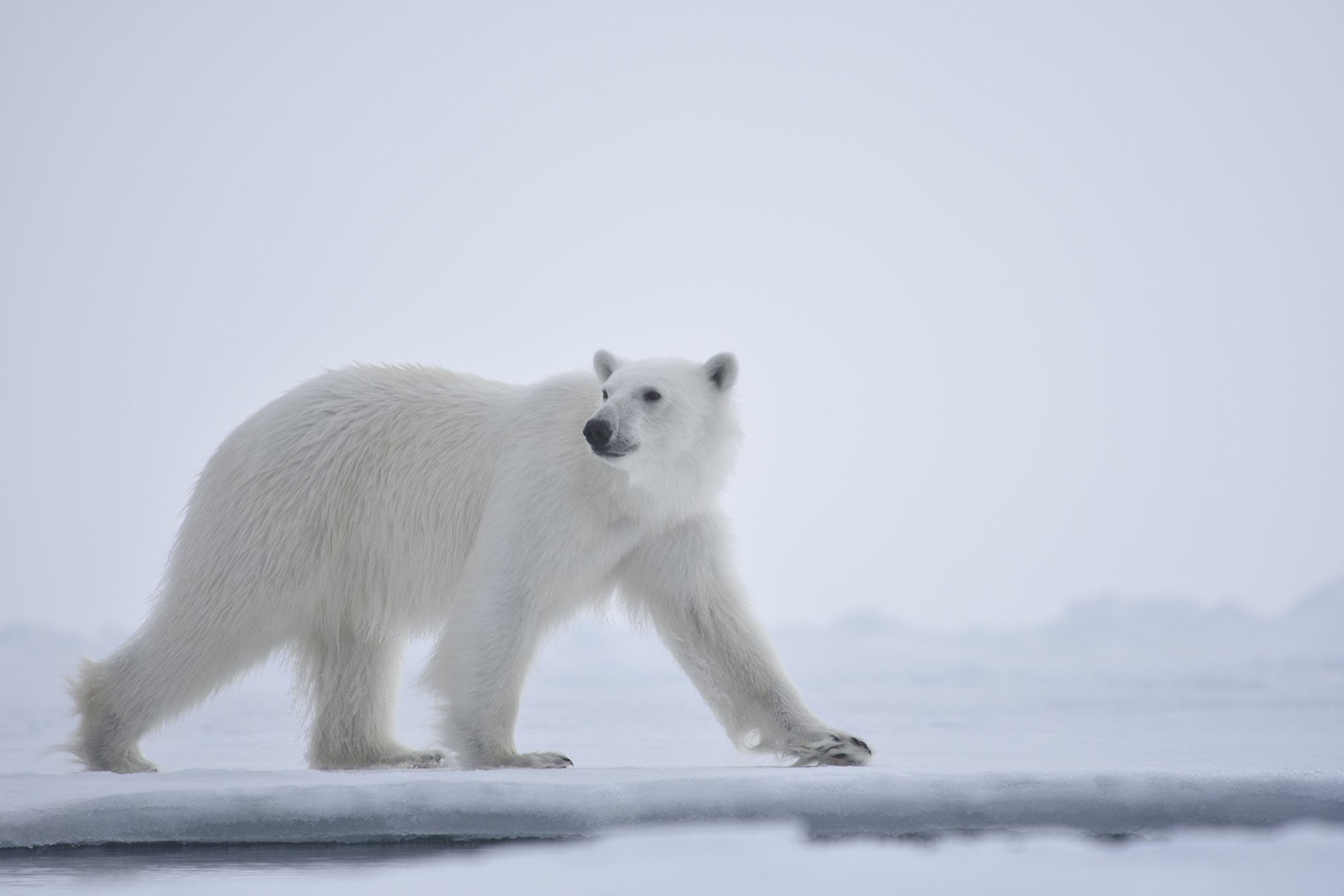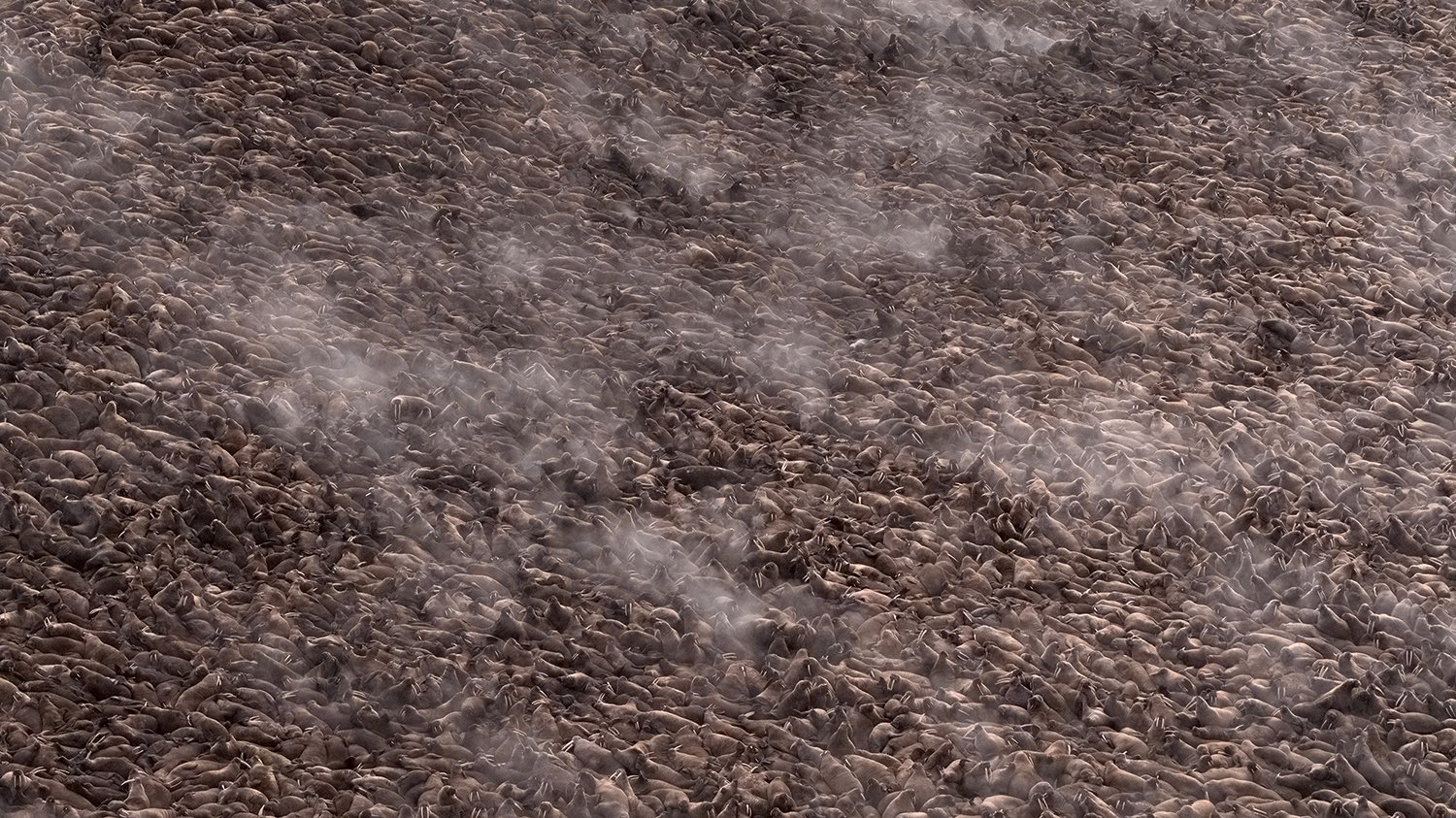A teenage orangutan is able to nimbly swing from branches, but hasn’t yet learned how to efficiently pick up ants. A baby polar bear is too timid to pounce on a seal pup. A young eagle wobbles on a branch as it learns how to fly.
These are the routine, trial-and-error moments that make up the life of any animal, and David Attenborough’s new Netflix series Our Planet features many scenes of young creatures navigating the perils, pleasures, and opportunities of the world around them. Like his past work, the show marvels at the diversity and richness of life on Earth.
 Wild Indian elephants in the mist, Kaziranga National Park, Assam, India.
Wild Indian elephants in the mist, Kaziranga National Park, Assam, India.
Wild Indian elephants in the mist, Kaziranga National Park, Assam, India.
But all of this charming storytelling is paired with a grim reminder that these animals may be the last of their kind. Their habitats, Attenborough tells viewers, are becoming increasingly hostile to life.
Take Action: Protect Our Oceans! Prevent Ocean Plastic Pollution
Over the course of human history, 83% of all mammals and half of all plant life has been lost due to human activity. Climate change caused by greenhouse gas emissions and ever-rising levels of resource extraction are accelerating the demise of the planet’s wildlife.
Our Planet’s creators don’t want to make viewers despair — instead, they want to show the audience what stands to be lost if action isn’t taken, while also conveying the sheer resilience of the global environment.
Here are six moments from the series that serve as a wake-up call that urgent climate change needs to be taken soon.
1. Polar bears
 Polar bear searching the ice-edge for food, Admiralty Inlet, Canada.
Polar bear searching the ice-edge for food, Admiralty Inlet, Canada.
Polar bear searching the ice-edge for food, Admiralty Inlet, Canada.
As ice melts in the Arctic, polar bears are struggling to hunt for food so much so that they’ve become a symbol of climate change.
In Our Planet, Attenborough tells viewers that the Arctic is warming twice as fast as the rest of the world and is rapidly losing ice in the process.
The second episode follows a mother polar bear and her and cub hunting for seals across a flat, icy landscape. In the past, this ice would have featured coves, hills, divots, ruts, and other variations that made it easier to hunt. As the region warms, these landscapes are flattening, giving the bears no cover for sneaking up on prey. Many of the hunting skills that the mother bear taught her son are no longer relevant and the changing terrain, combined with the overall decline in sea ice, makes it hard for them to get enough food.
Read More: Devastating Video of Starving Polar Bear Holds a Much Bigger Story
2. Orangutans
 A Sumatran Orangutan named Louis, 7 years old. This individual is part of a long term study.
A Sumatran Orangutan named Louis, 7 years old. This individual is part of a long term study.
A Sumatran Orangutan named Louis, 7 years old. This individual is part of a long term study.
The Sumatra and Borneo rainforests in Indonesia and Malaysia, the sole habitat of the world’s orangutans, have been ravaged by industrial deforestation over the past several decades.
As a result, orangutans have less and less land to live on.
Our Planet follows a few different orangutans who spend most of their days searching for food. The youngest orangutan is still dependent on her mother for food, and Attenborough says that it will take about a decade before she’ll be independent. Another orangutan, who is a little older, has become adept at swinging from branches but still hasn’t mastered how to gather ants. This skill, and many others, could one day become obsolete, Attenborough says, if the forests continue to degrade and disappear.
Read More: The Surprising Reason Why 150,000 Orangutans Have Died in Borneo
3. Walruses
 Over 100,000 walrus pictured along a small stretch of coast in Northern Russia making it the largest gathering of walruses on the planet. In the absence of sea-ice, due to a warming Arctic ocean, they have no choice but to come to land in order to rest.
Over 100,000 walrus pictured along a small stretch of coast in Northern Russia making it the largest gathering of walruses on the planet. In the absence of sea-ice, due to a warming Arctic ocean, they have no choice but to come to land in order to rest.
Over 100,000 walrus pictured along a small stretch of coast in Northern Russia making it the largest gathering of walruses on the planet. In the absence of sea-ice, due to a warming Arctic ocean, they have no choice but to come to land in order to rest between feeding trips to the ocean floor in search of clams.
Walruses that normally camp out on ice sheets during hunting offseasons have been forced to take shelter on rocky islands as Arctic ice melts.
Our Planet shows an island packed with hundreds of thousands of walruses. Some of the animals end up climbing a steep mountain side to find some room to stretch out, but when it comes time to descend the mountain and return to the sea, they don’t know how — and many of them end up falling to their deaths.
These brutal scenes, Attenborough tells the audience, are a direct result of climate change.
4. Krill
 Southern humpback whales lunge feeding on krill in the Gerlache Straight, Antarctic Peninsula.
Southern humpback whales lunge feeding on krill in the Gerlache Straight, Antarctic Peninsula.
Southern humpback whales lunge feeding on krill in the Gerlache Straight, Antarctic Peninsula.
Another casualty of diminishing ice levels in Antarctica are krill, the tiny sea creatures that are the primary source of food for countless species. Krill traditionally crowd under sea ice for protection and to the eat algae that grows underneath it. When the ice recedes in the summer, bigger animals eat the huge krill populations that formed in the colder months.
But as sea ice recedes earlier and farther each year, adult krill populations have declined by 70% to 80% in some areas.
Read More: Stunning Images of Antarctica Show Why It Needs to Be Protected
5. Coral reefs
 Moore Reef, northern Great Barrier Reef, Australia.
Moore Reef, northern Great Barrier Reef, Australia.
"With climate change our seas are warming and when the water gets too hot the corals expel the microscopic plants living within their tissues. These plants give the corals their color and provide most of their food, so if sea temperatures remain high for a week or two the corals will starve and die.” Moore Reef, northern Great Barrier Reef, Australia
“The oceans are now rapidly warming with devastating consequences on marine communities,” Attenborough recently said at an event during the World Bank’s Spring Meetings. “Nowhere is this seen more clearly than on our coastal reefs.”
In recent years, warming ocean temperatures have triggered a phenomenon known as “coral bleaching,” which is when coral expel symbiotic plant life that give them color and turn white.
Read More: Baby Coral Declined by 89% Across the Great Barrier Reef
Successive bleaching events can cause reefs to permanently die and scientists fear that the vast majority of coral could die by 2050.
Attenborough takes viewers on a tour of a section of the Great Barrier Reef that has experienced a dramatic decline in recent years. What once was a thriving and vibrant ecosystem now looks like a graveyard.
6. Humpback whales
 A humpback whale.
A humpback whale.
A humpback whale.
Scattered throughout Our Planet are scenes of resilience and redemption, signs that the planet can recover from its widespread decline.
In the second episode, Attenborough highlights humpback whale populations around Antarctica that have surged back from the brink of extinction after an international law protected them from hunting.
Read More: Humpback Whales Are Thriving After Coming Close to Extinction
These massive creatures show that when given space and time to recover, animals, plant life, and whole ecosystems can recover.